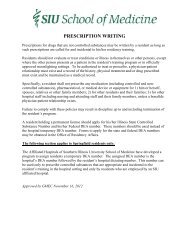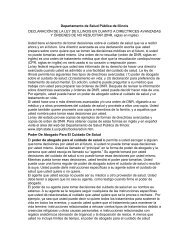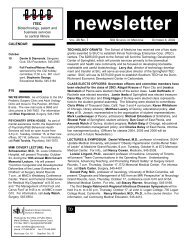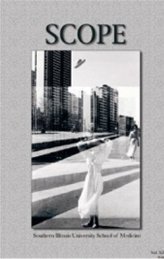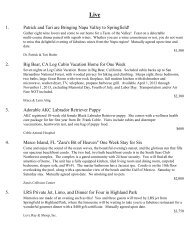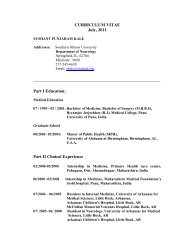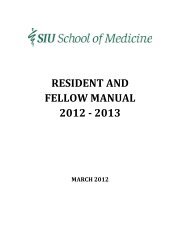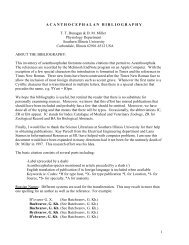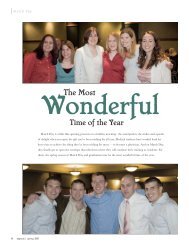Ch. 54 – Biliary System
Ch. 54 – Biliary System
Ch. 54 – Biliary System
Create successful ePaper yourself
Turn your PDF publications into a flip-book with our unique Google optimized e-Paper software.
A<br />
Recurrent Pyogenic <strong>Ch</strong>olangitis<br />
<strong>Ch</strong>olangiohepatitis or intrahepatic stones are endemic in<br />
East Asia. It is uncommon in North America except in<br />
the <strong>Ch</strong>inese population. It is more common in people<br />
with poor economic status and living standards. The<br />
infectious aspect of this disease is caused by bacterial<br />
contamination, usually biliary pathogens, and biliary parasites,<br />
such as Clonorchis sinensis, Opisthorchis viverrini,<br />
and Ascaris lumbricoides. <strong>Biliary</strong> sludge and dead bacterial<br />
cell bodies form brown pigment stones formed<br />
throughout the biliary tree, which cause partial obstruction.<br />
<strong>Biliary</strong> strictures and repeated episodes of cholangitis<br />
are the common clinical course and may lead to<br />
hepatic abscesses and cirrhosis. Patients are at risk for<br />
cholangiocarcinoma due to persistent biliary infection<br />
and irritation from stones and sludge.<br />
Presentation<br />
Patients with recurrent pyogenic cholangitis (RPC) commonly<br />
present with frequent episodes of pain, fever, and<br />
jaundice. MRC and PTC are the primary imaging modalities<br />
for monitoring of disease progression (Fig. <strong>54</strong>-25).<br />
They are useful for identifying location and severity of<br />
<strong>Ch</strong>apter <strong>54</strong> <strong>Biliary</strong> <strong>System</strong> 1573<br />
Figure <strong>54</strong>-24 A posteroanterior radiograph obtained during a barium examination of the small bowel shows an<br />
irregular collection of barium in the right upper quadrant (A, arrowheads), representing partial fi lling of the cystic<br />
duct. Both jejunum and ileum are markedly dilated, with dilution of the barium in a pattern consistent with small<br />
bowel obstruction. There is abrupt termination of the barium column at the site of an oval intraluminal fi lling<br />
defect (A, arrow). A view of the end of the barium column shows luminal obstruction by a smooth intraluminal<br />
mass (B, arrows) with faint calcifi cation of the peripheral rim. Exploratory laparotomy revealed a foreign body in<br />
the terminal ileum that was 4 cm by 4 cm and felt hard. (From Kaiser AM, Molmenti EP: Gallstone ileus. N Engl<br />
J Med 335:942, 1996.)<br />
B<br />
stones and strictures and allow decompression of the<br />
biliary tree in a septic patient.<br />
Management<br />
Patients with RPC should be treated with a multidisciplinary<br />
approach including endoscopists, interventional<br />
radiologists, and surgeons because of the frequency and<br />
inaccessibility of strictures and stones. The long-term goal<br />
of therapy is to extract stones, remove debris, and relieve<br />
strictures. Because clearance of all stones at any one<br />
operation is diffi cult, Roux-en-Y hepaticojejunostomy<br />
with a subcutaneous afferent limb (Hudson loop) is a<br />
safe and effective way to provide access to the biliary<br />
tree for stone extractions. 36 <strong>Ch</strong>olangiocarcinoma has been<br />
reported in 1% to 10% of patients with RPC; therefore,<br />
patients with adequate hepatic reserve and a dominant<br />
lobe with stones should undergo extended hepatectomy<br />
of the involved side, Roux-en-Y hepaticojejunostomy,<br />
and Hudson loop. This would remove the stones and<br />
reduce the future risk for cholangiocarcinoma. About 50%<br />
of patients require further percutaneous choledochoscopy<br />
or balloon dilation to clear any remaining stones or<br />
manage persistent strictures.



